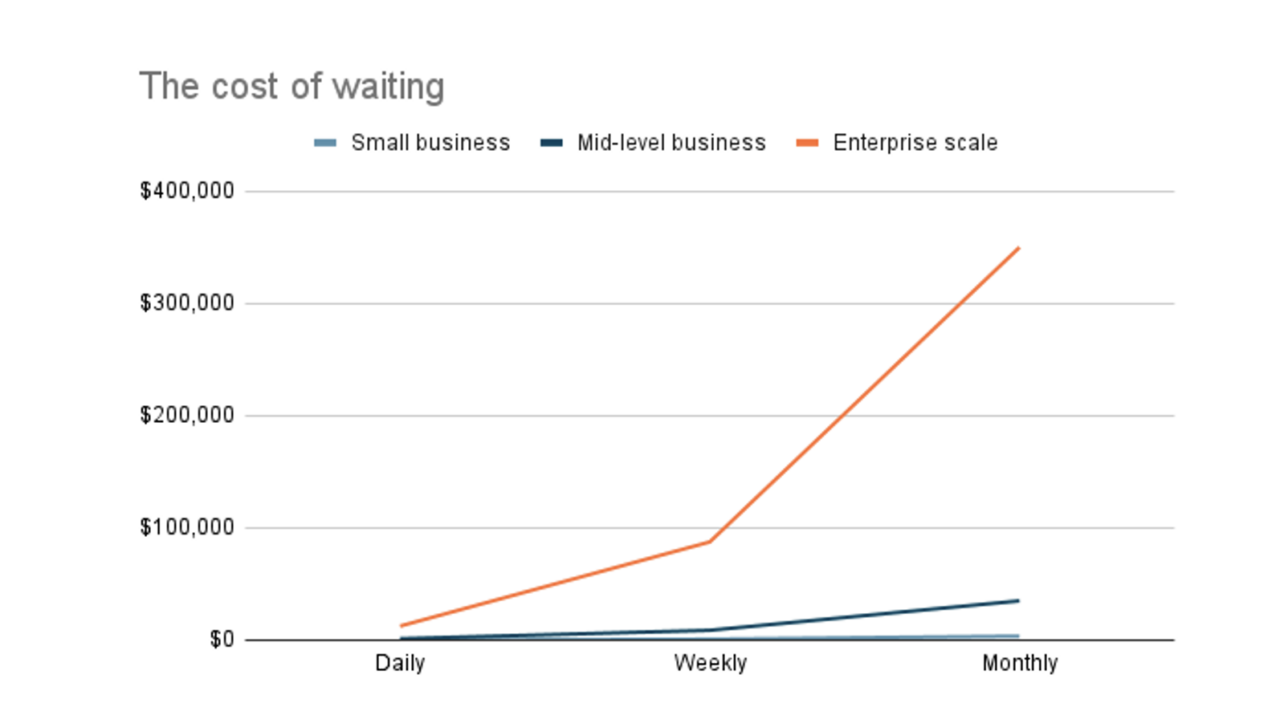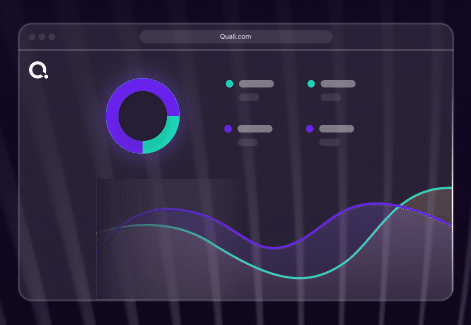Cutting cloud costs is rarely top priority for CTOs whose attentions are already stretched thin on agile software delivery. The gargantuan cloud waste figures seem so far away that CIOs “safely” choose postponing cost control over any immediate disruption of IT processes.
But as William James put it, “When you have to make a choice and don’t make it, that is in itself a choice.” So while waiting seems safer, it’s an unconscious decision to add a 27% markup on every workload spun up, serverless function invoked, and API call executed.
Let’s take a closer look at what waiting is costing you and why overcoming hesitation (and cloud waste) is easier than you think.
The true cost of waiting stings: Why inaction isn’t neutrality
When Engineering leads choose to “do nothing” rather than “break something,” they often imagine the cost is trivial. But in reality, the waste is anything but. In a study by VMware, 31% of business leaders say cloud waste exceeds half their spend.
Here’s the ugly math, countless surveys put waste at 30-40% of spend (Forbes, McKinsey):

Figure: What hesitation is costing small, mid-level, and big businesses
- Small businesses with monthly cloud spend of $10,000 are effectively throwing away $125 daily, $875 weekly, and $3,500
- If a mid-level business spends $100,000 monthly, they are wasting $1,250 daily, $8,750 weekly, and $35,000
- Big businesses with monthly cloud bills of $1,000,000 are losing $12,500 daily, $87,500 weekly, and $350,000 monthly
The hidden opportunity cost of postponement: Beyond the dollars and cents
The cost of waiting goes beyond the gargantuan waste that piles up in plain sight. Doing nothing chips away at your operational agility, weakens your security posture, and increases your carbon footprint.
Every second of delay means:
- Funding for new products, features, and digital experience improvements gets swallowed by waste.
- Wasted spend actively erodes revenue and business competitiveness.
- Sustained operational drag of unproductive FinOps meetings and manual cost optimizing.
- Continued waste could cause budget cuts to IT Ops and Security.
- Idle resources no one is monitoring become backdoors, inviting attackers to wreak havoc.
- Unnecessary servers left running consume excess energy and increase emissions, making the world worse for everyone.
The psychology of delay
The price of inaction is steep. But just like every bad habit, waste is hard to break, and there’s always an excuse to justify delay. These excuses create a false sense of assurance, but in the end, they only give you breathing room to multiply long-term waste:
- Let’s wait until the next sprint. Your cloud bill doesn’t take a sprint off, whether release cycles are running or not.
- Uptime is high-priority so cost control can wait. Optimization isn’t a nice-to-have monthly cleanup exercise, it’s a business imperative if you don’t want wasted spend to turn revenue into a joke.
- We’re not downplaying cost control, finance is looking into it now. Finance can only create budgets and visualize eventual spend — the optimization in between happens during provisioning, so cost ownership still belongs to Engineering.
- It’s impossible to cut our cloud bill right now; every resource running is critical. Clearly, somewhere hidden in those critical resources are overprovisioned VMs and idle instances.
- But we’ve implemented FinOps! FinOps offers solutions on paper that engineers forget as easily as sticky notes during agile software cycles.
Basically, what happens is that while the excuses continue, the financial clock keeps ticking. Business leaders remain stuck in a limbo, not realizing their indecision has become the costliest decision after all.
Why is “do nothing” the predominant answer to cloud waste?
- “Present bias” blinds IT leaders to the long-term cost of postponement: Engineering leads often overvalue short-term rewards and underestimate future consequences. “It can wait” becomes the obvious rhetoric whenever talk of cost optimization comes up. But the cost of waiting isn’t static, it’s metered by the second, that’s $8,687 per second (at a total annual waste of $273.831B).
- Cloud environments and cloud bills are too complexIt’s easy to say “turn off idle resources or rightsize oversized instances”, until a mission-critical workload goes down and SLAs are breached. Cloud infrastructure is a complex mess (ephemeral resources, multi-cloud architectures, API and database calls). And AI workloads are further complicating things: 82% of engineers find cloud cost management harder since AI. Add confusing cloud bills to the mix and it just becomes easier to ignore the waste than to untangle it all.]
- Engineering leads believe the cost is trivial: A single idle VM spikes waste? Engineers think: It’s only a few hundred dollars or it’s part of the cost of doing business. Until it isn’t. The simple truth: “Do nothing” is a waste multiplier. A single idle instance might not hurt your pockets. But multiply it by every development, production and test environment, by every microservice, by every storage bucket containing data that’s outlived its purpose, and the cost doesn’t look so trivial anymore.
- Business leaders consider IaC the Zenith of cloud automation technology: Infrastructure-as-Code (IaC) platforms are great innovations. But while they automate infrastructure provisioning, they leave de-provisioning, lifecycle management and cost control to manual processes. Engineers forget to turn off an idle environment? You bleed money. They remember to turn it off? You bleed time. What you need instead is a provisioning platform that automatically ensures every resource or environment provisioned has an end date.
- FinOps/Cost management tools don’t speak the language of Finance and Engineering simultaneously: The cloud cost management system is fundamentally broken. Finance wants to see cloud costs drop and feel engineers are avoiding the issue. Engineers want to deliver software faster and see cost management as a drag or as Finance’s responsibility. The FinOps dashboards meant to unite the teams add to the rift, they spotlight waste after it has occurred, turning optimization into a blame game.
- Cloud cost optimization generally suffers a framing problem: Cost management is often presented to engineers from the perspective of fixing what’s broken, making teams see it as thankless clean-up, rather than innovative cost engineering.
So, instead of waiting, what should you do as an IT or business leader?
What if you could control waste at the source and get immediate results?
You don’t need more FinOps meetings. You don’t need cost dashboards with better visualization of how waste happened. You need Infrastructure Platform Engineering (IPE), an approach that cuts off waste before it has the chance to emerge. How does an IPE tool such as Quali Torque do this?
- Offers optimization with context: Because IPE understands why every workload exists and what dependencies map to it, it spots budget sinks and optimize autonomously without “breaking anything”.
- Simplifies environment and infrastructure lifecycle management with automation: From provisioning to teardown, IPE takes charge. Every resource has a pre-declared termination date. So engineers get to provision resources and (even) entire environments with a few simple clicks and the IPE decommissioning them automatically.
- Infrastructure comes pre-governed: Everything is codified into blueprints, including cost control policies. This ensures nothing gets spun up (by human or machine) unless it passes muster. For example, Quali Torque intelligently prevents engineers from deploying oversized GPUs for small workloads or from using outdated, costly storage types.
- Unites Finance and Engineering: With IPE, Finance’s cost recommendations are baked into environment blueprints. So the moment a developer provisions a resource through the IPE, it goes live already cost-optimized.
- Standardized provisioning blueprints: IPE leaves nothing to chance or forgetfulness. Tagging, attribution, overnight shut downs, and resource limit enforcement all comes out of the box.
- Takes the cost engineering approach: By making cost management a native feature of infrastructure provisioning, IPE eliminates the technical debt of time and effort spent on being cost janitors.
Conquer hesitation and cloud waste without babysitting infrastructure or cloud bills
Whether you’re waiting due to architectural complexity, uncertainty around change, or not knowing where to start, Quali Torque’s IPE is your best bet at beating waste.
Consider this comparison:
- The current status quo (with IaC+Cost management tools): An engineer deploys a costly instance for a test environment and promptly forgets about it when they are done testing.
- With Quali Torque’s IPE: The engineer goes to the Torque self-service portal and selects a test environment template. Torque provisions the environment as a pre-defined, pre-governed, cost-optimized resource, applying tags and deprovisioning it automatically after the pre-specified timeline.
Stop letting waste and indecision win and take charge of your cloud costs. Visit the Torque playground today to see how Torque helps you eliminate waste.

